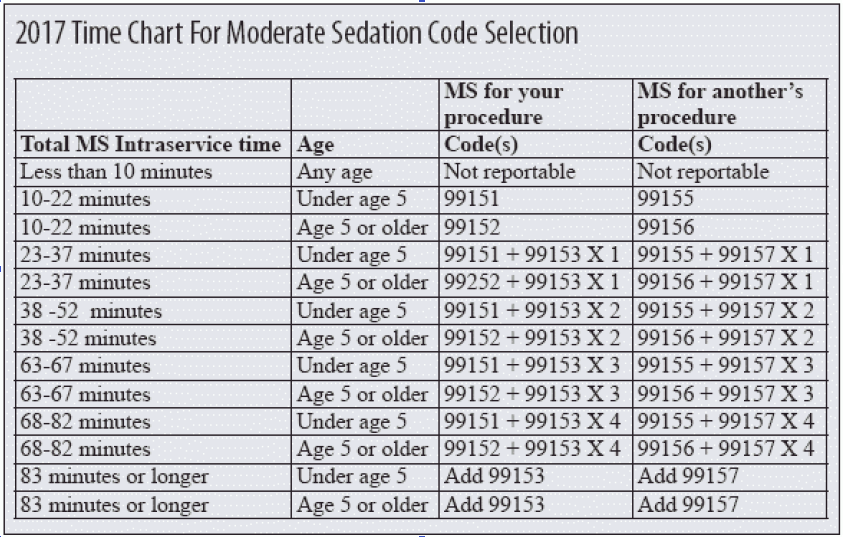Moderate Sedation
Big Changes in Moderate Sedation Billing for Emergency Medicine in 2017:
Moderate (Conscious) Sedation [MCS], is a drug induced depression of consciousness. The patient maintains the ability to respond purposely to verbal direction or verbal direction either alone or accompanied by light tactile stimulation. Interventions are not required to maintain the patient’s airway, and some of the most commonly performed procedures using moderate sedation in emergency medicine include: Reduction dislocation, Reduction Fracture with dislocation, Reduction of Fracture.
Emergency department physicians will be able to include these additional moderate sedation codes as additional payment to the procedure thru documentation of the time spent as explained below. The plan is to reduce some of the “bundled” procedure payments in the future that include payment for moderate conscious sedation, but for now it is correct coding to document the time spent while the patient is being monitored for conscious sedation.
What it is included in the Intra-service time:
Intra-service monitoring time begins with the administration of the sedating agent. It requires continuous FACE-to-FACE attention from the provider, and monitoring of the patient’s response to the sedation, reassessments, and vital signs including Oxygenation, heart rate, and blood pressure.
“Moderate sedation services provided by the same physician or other qualified health care professional performing the diagnostic or therapeutic service that the sedation supports, requiring the presence of an independent trained observer to assist in the monitoring of the patient’s level of consciousness and physiological status.”
Intra-service time for Moderate Sedation ends when the procedure is completed, the patient is stable, and the provider providing sedation ends personal FACE-to-FACE care.
It is important to document your time from the start to when you have completed the procedure and ended your FACE to FACE time with the patient.
As seen in the following chart, the new moderate sedation codes lower the threshold for the required Intraservice Time from 16 minutes to a minimum of 10 minutes. This is good news for our Providers. For instances in which sedation goes beyond 15 minutes, the additional increments of time (15 minutes) can be reported once the midway point is passed. For example, 23 minutes of Intraservice Time (8 minutes beyond the initial 15 minutes) is assigned the initial and additional code based on other coding parameters noted below:

